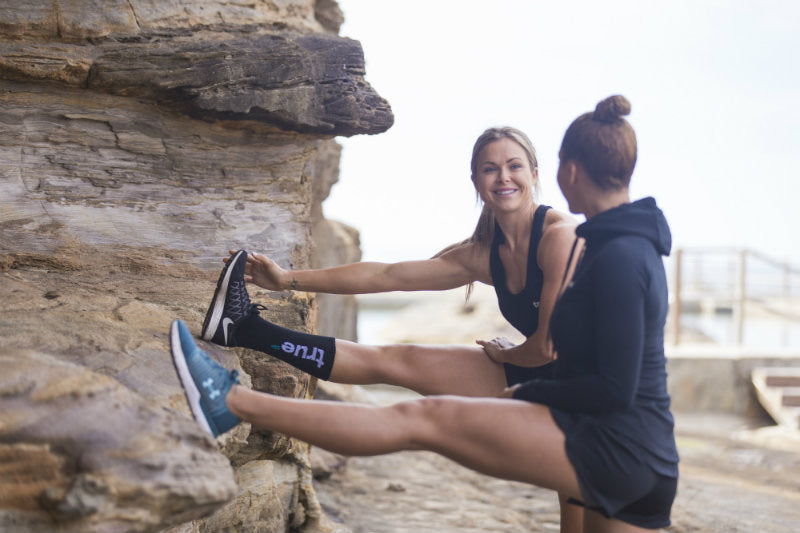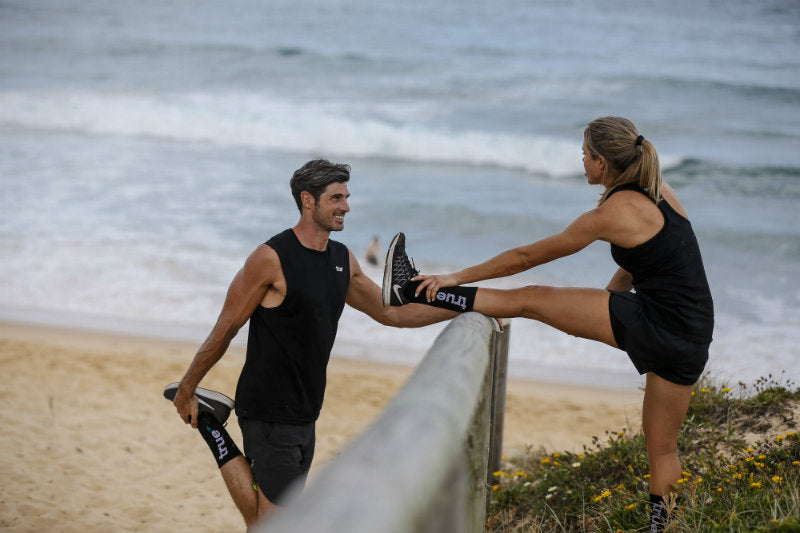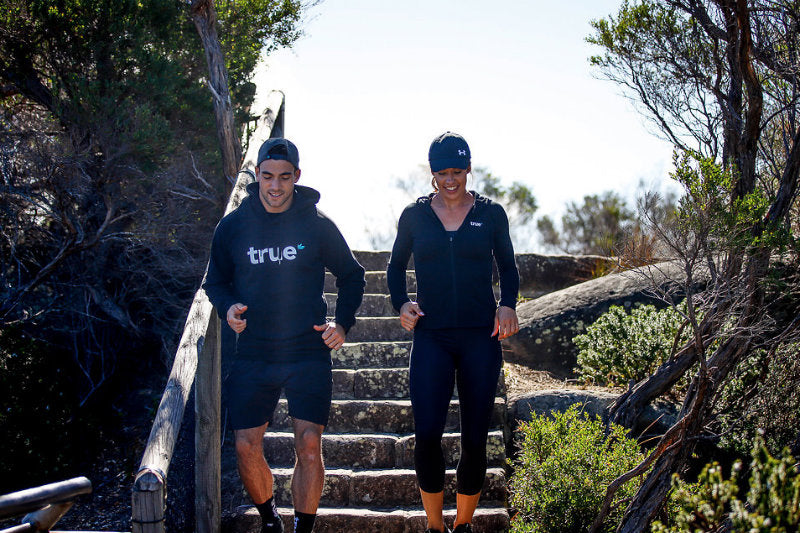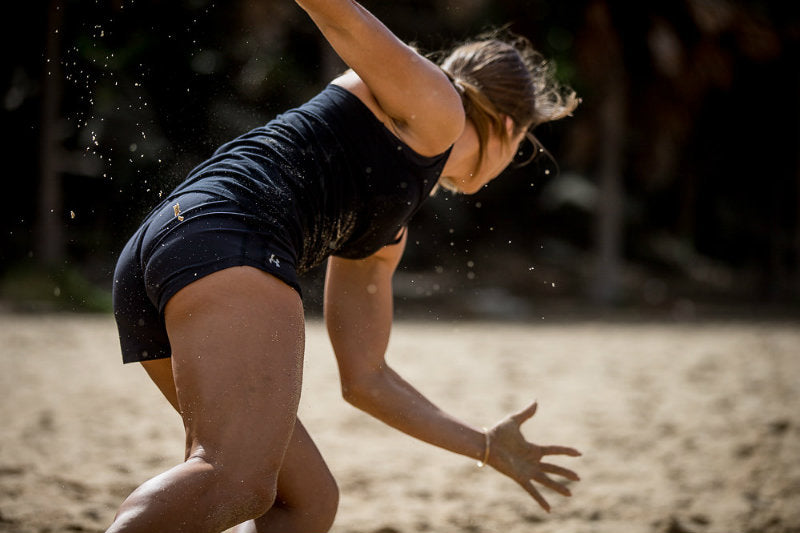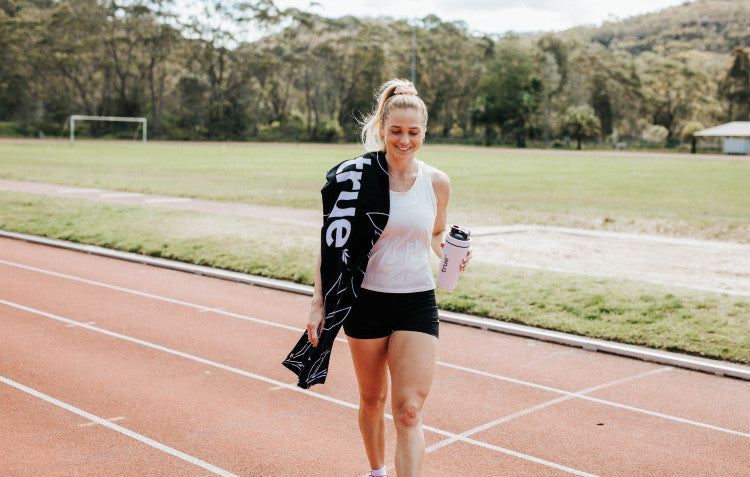I recently spoke to Exercise Scientist & Strength and Conditioning coach Daniel Malmberg to get the lowdown on how to protect yourself from injuries and strain.
Physical activity is crucial for staying healthy, fit and looking good. Many of us were introduced to some kind of sports activity from an early age, others, however, either didn’t show interest or simply didn’t have the opportunity.
Luckily, it’s never too late to start exercising, and once you get a taste for it, you’ll be hooked for the rest of your life.
When it comes to taking up an activity for the very first time, there’s a universal rule which applies to all sports - stay safe and don’t overdo it. After practising a certain activity for a while, you’ll start feeling confident and strong, and that’s when you have to be the most careful.
Playing sports means exposing yourself to injuries, but the good news is around 50% of sports injuries are preventable.
Ask the expert
Name: Daniel Malmberg
Profession: Exercise Scientist & Strength and Conditioning Coach, Owner of Ironberg Performance
Qualifications: Exercise Physiology degree
Years of experience: 10
Specification: Dan excels in transforming people to move, feel and look better than they ever have before. He has exceptional knowledge in human movement, athletic development and psychology to build physical specimens through integrative strength and conditioning programming, and effective coaching methods.
Dan’s comments:
“Fortunately chronic injury is extremely preventable. The occurrence of chronic injury for the recreational athlete can be dropped to a negligibly low per cent chance of happening if one can keep their ego in check during training. Anecdotally, in gym settings, I have seen or heard of five acute cases of injury that has come unforeseen in 10 years of being in the industry. Almost all acute injuries I have seen have only happened in dynamic, uncontrolled settings, such as competitive settings, most commonly in contact/impact sports and have even then happened due to not being mindful of your own capacity.
Dan’s top tips:
-
The warm-up is crucial: It promotes blood flow and prepares you physically and mentally to do the work that is to come. Keep the warm-up specific to prime the movement patterns you are about to undertake. For squat day, warm up the glutes, hamstrings and your trunk (core) muscles for the work they are about to do with variations, and priming exercise for the main strength and conditioning work.
-
Technique: Movement over the load. Slowly progress your efforts and be mindful of your movement when you are performing your exercises. Be smart and educated about what particular exercise you are about to do. There is no such thing as a bad exercise (well almost no such thing, no way can you convince me loaded squats standing on kettlebell handles is useful for anyone), the only thing that’s bad is poor execution and lack of understanding of purpose and awareness.
-
Physical training and activity should be built up over time like a snowball effect. Start small, get the ball rolling and build momentum. People only get hurt when they go from the couch to doing 14 training sessions a week with no build up. Your joints and tendons take longer than muscles to recover from training bouts due to lack of blood flow in those areas, so take regular days of low impact activities to give them a chance.
-
Flushing the body will kick-start the recovery process and shorten DOMS (Delayed Onset Muscle Soreness), and is also an excellent time for some static stretching too!
-
Focus on nutrition and supplementation to replace essential nutrients and minerals so your body will be able to reap the benefits of each training bout.
In summary:
“Be smart, be mindful, build up over time and play the long game. Building your body is like building a great wall. One brick at a time done day after day for a long period of time will build everlasting results.”

How do sports injuries happen?
Sports injuries occur as a consequence of exploiting a certain body part to the extent at which it cannot withstand. Another way injury can happen is when a body part comes into a direct impact.
There are two types of injuries - acute and chronic.
- Acute sports injuries happen suddenly, for instance when you fall down and sprain your ankle.
- Chronic sports injuries develop when a muscle or joint gets overused during a long period of time.
How to avoid sports injuries
Considering we know what causes sports injuries, there are certain precautionary measures we can apply in order to avoid getting hurt.
Professional athletes have trouble preventing injuries, mostly because their training regimes are extremely intense and their bodies have to be exposed to constant pressure and overuse. However, that’s not the case for beginners and recreational athletes. If you’re just starting with sports, focus on taking the necessary steps which will help to avoid getting injured right from the start.
- Step 1 - Always warm up
A proper warm-up is the most important step in preventing injuries. The optimal time to warm up should be around 5-10 minutes. During that period, focus on stretching and preparing your muscles for the upcoming physical activity. It is important to start the training session off with simpler exercises and gradually move up to more intense movements. By administering this type of warm-up you’ll enhance the blood flow to the muscles, thus making them more flexible, which reduces the risk of strains.
The perfect examples of good warm-up exercises are walking and jogging. You can also add some light stretching exercises which help to lengthen the muscles, making them less prone to injuries.
- Step 2 - Work on the technique
The crucial part of taking up any sport is mastering its technique. The better the technique, the lower the chance of getting an injury. Make sure you learn the correct technique right from the start. Let your mantra be form over speed!
- Step 3 - Don’t over-do it
When you take part in any physical activity, it is of extreme importance that you recognise your limits. If you’re a beginner (recreational) athlete, pay close attention to the muscles you didn’t use before and try not to stretch or strain them too much. Also, remember it takes time to increase stamina, so make sure you do it gradually. That way your body won’t be overused and you’ll be able to avoid injuries.
- Step 4 - Cooldown
As important as it is to warm-up, an after-workout cooldown shouldn’t be overlooked either. While a warm-up helps increase the blood flow, a cooldown eliminates harmful substances like lactic acid, which causes muscle pain after an intense session.
After you’re finished with your workout, spend between 5 and 10 minutes cooling down. The best way to do this is by walking around, which will give your body a chance to establish a normal heart rate. This also helps with getting your blood flow back to normal by replacing oxygen and nutrients. This process is crucial to the muscle recovery.
- Step 5 - Give your body what it needs
In order to reach its maximum, your body needs to stay hydrated, so it is crucial that you drink plenty of fluids. The same goes for food - as the primary source of fuel, the food we eat helps us to achieve the goals we want.
Therefore, after an intense workout, make sure you fill up on foods rich in magnesium, as it aids in muscle recovery. Magnesium can be found in dark leafy greens, nuts, seeds and fish, or can be supplemented with True ZMA blend. Vitamin B is great for increasing energy levels and can be found in meat, poultry and seafood. Besides food, all important vitamins and minerals also come in a supplement form.

Which are the most common types of sports injuries?
- Knee injury or an ACL tear
The main role of the ACL or anterior cruciate ligament is to stabilise the knee. This type of injury can occur when you don’t slow down gradually, and when you suddenly chop or change the direction. The ACL injury usually means that the ligaments on the inside of the knee are torn up.
Symptoms of a torn up ACL are a swollen knee and a feeling of instability.
- Shoulder injury
As the weakest joint of the body, the shoulder is prone to all types of injuries like dislocations, misalignments, muscle strains and ligament sprains. The majority of shoulder injuries can be prescribed to a lack of flexibility, strength or stabilisation.
The treatment involves resting and icing, which helps with the swelling and pain. If the injury doesn’t improve in two weeks, you are advised to seek professional help.
- Groin pull
Also known as groin strain, a groin pull is an injury to the groin muscles which spreads from the upper-inner thigh to the inner thigh, all the way to above the knee. This injury often happens during sudden side-to-side movements and due to the lack of flexibility.
The symptoms of a groin pull are bruising and irritation of the groin, which makes it difficult for an injured person to perform usual movements (like stepping out of the car or anything else that requires stretching of that area).
The treatment requires resting and icing every 15 to 20 minutes during the 72 hours that follow. After that, the area needs to be heated for 15 to 20 minutes, in combination with careful groin stretching and motion exercises.
- Tennis and golfer’s elbow
Tennis and golfer’s elbow are common with athletes whose performance consists of repeated gripping movements. These types of sports injuries are also known as a medial or lateral epicondylitis. As a consequence of the repeated action, the tendons of the forearm become inflamed, causing pain which follows every hand movement.
In the early phase of treatment, an injured person is advised to rest and ice the problematic area. In addition to that, consulting a physical therapist is always a good idea. A professional can help by demonstrating certain stretching techniques and other strengthening exercises that are good for breaking down the stiffness and improving strength.
- Shin splints
Shin splints are a common sports injury for athletes who tend to do a lot of running. The most reliable symptom of shin splints is pain in the lower leg bone, or the tibia. Athletes who suffer from shin splints usually discover it at the beginning of the season, due to a sudden increase in activity and mileage. The treatment for shin splints involves resting, icing and slowly increasing all running-based activities.

The bottom line
Don’t let the fear of getting injured stop you from doing something you love, especially when there are ways to prevent them from happening in the first place.
No matter how comfortable you feel on the court or in the gym, remember to stay safe and listen to your body. There’s no need to go through any uncomfortable experiences when it’s in your power to avoid them altogether.
